Is Swai Fish Healthy? Here’s What You Need To Know
From protecting your eyes to boosting heart health, this aquatic delicacy has a lot to offer.
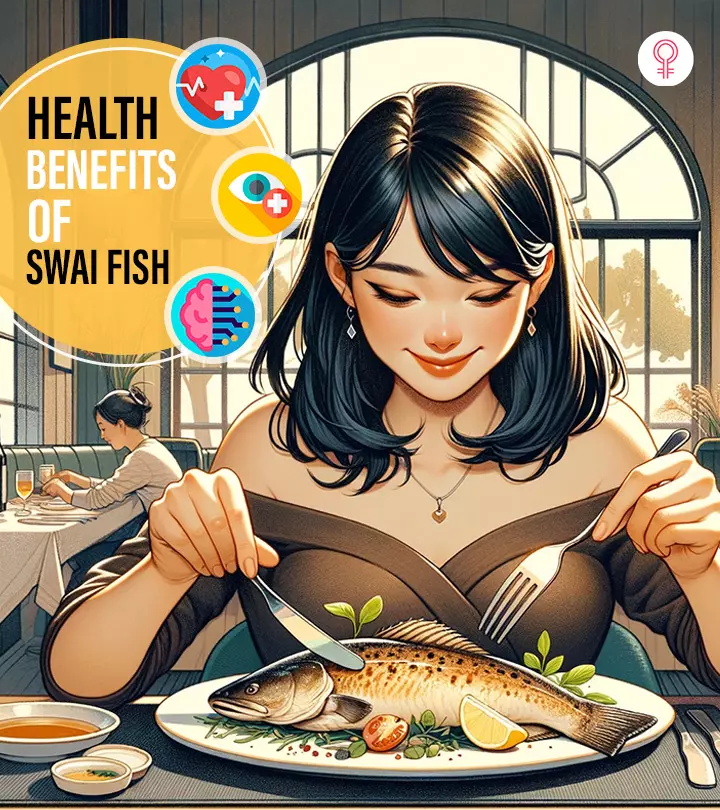
Image: Created with Dall.E
Swai fish is a staple in Southeast Asia and has a mild, sweet flavor and juicy meat. Its tender and flaky texture make it an extremely popular ingredient for many delicious dishes. Swai fish is a good source of protein and omega-3 fatty acids. These beneficial fats can boost your heart and brain health. However, there have been safety concerns associated with the farming practices of swai fish. Is it healthy and safe to consume? This article discusses the benefits, nutrition profile, health concerns associated with the fish, and environmental impact of swai fish farming. Let’s get started!

 Know Your Ingredient: Swai Fish
Know Your Ingredient: Swai FishWhat Is It?
A type of white fish with a mild, sweet flavor and juicy meat.
What Are Its Benefits?
Boosts heart and brain health, improves vision, reduces the risk of inflammatory eye conditions, and improves cognitive function.
Who Can Consume It?
Anyone can eat it, except pregnant women, young children, and those with high mercury levels.
How Often?
Consume it up to 12 ounces per day or two servings.
Caution
It may cause abdominal pain, nausea, diarrhea, vomiting, and food poisoning. People with fish allergy should not consume it.
In This Article
What Is Swai Fish?
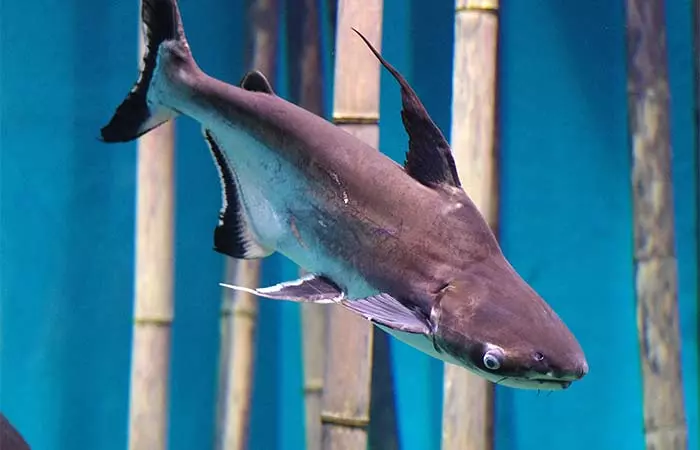
Swai fish (Pangasius hypophthalmus) is a freshwater fish native to Southeast Asia. It is usually found in the Mekong basin of Southeast Asia and the Chao Phraya river in Thailand. Many Southeast Asian dishes feature its juicy, tender white meat. Swai fish is also known as sutchi catfish, striped catfish, basa, tra, Vietnamese catfish, river cobbler, and iridescent shark-catfish(due to its shimmery, iridescent appearance).
Swai fish is highly valued commercially. A major reason for its capture-based aquaculture is that it is an exceptional spawner and can produce a large number of larvae that are easily caught from rivers (1).
The fish was introduced into the US as ’Asian catfish.’ It sparked confusion as it was referred to as ’catfish.’ In some restaurants, American catfish was often swapped with the cheap and readily available swai fish and served without the customer’s knowledge (2). Both American catfish and the swai fish look similar, but they belong to separate families and are raised differently. The Food and Drug Administration (FDA) took steps to stop the misbranding and allowed only the American catfish family, Ictaluridae, to be marketed as catfish (3).
 Fun Fact
Fun FactThe fact that you might have eaten swai fish instead of the preferred fish fillet you ordered isn’t that bad. Swai fish is packed with nutrients that can help your body in a variety of ways. Continue reading to learn more about swai fish nutrition.
Key Takeaways
- Swai fish may help promote heart health, boost brain function, and improve vision.
- There are some concerns over Swai fish farming, such as low sustainability, environmental risks, and antibiotic usage.
- Risks of eating swai fish include microbial, heavy metal, and chemical contaminations. Also, Swai fish can cause allergies and reactions due to the protein parvalbumin and other allergens.
Nutritional Information Of Swai Fish
A 100g serving of frozen swai fillet contains (4):
| Calories | 88 kcal |
| Proteins | 18.58 g |
| Total lipids (Fat) | 1.77 g |
| Saturated Fatty Acids (Total) | 0.44 g |
| Polyunsaturated Fatty Acids (Total) | 0.88 g |
| Sodium | 27 mg |
| Cholesterol | 22 mg |
Swai fish fillets have a similar fatty acid profile as other freshwater fish species. They contain linoleic acidi A type of essential omega-6 fatty acid necessary for the synthesis of the cell membrane. , eicosapentaenoic acidi A type of omega-3 fatty acid obtained from fish oil that may help reduce cellular inflammation. (EPA) and docosahexaenoic acidi A type of omega-3 fatty acid obtained from fish oil that may boost brain health. (DHA) (5), (6).
 Fun Fact
Fun FactHowever, on closer inspection, the levels of beneficial fatty acids are still on the lower end of the spectrum compared to other fish (6). These beneficial fatty acids provide many health benefits. Take a look.
Health Benefits Of Swai Fish
Swai fish is a low-mercury, high-protein white flesh fish with mild taste. It is a vital source of selenium, niacin, and vitamin B12. Antioxidant properties of selenium support thyroid health and immune system function. Niacin and vitamin B12 are essential for producing energy, preserving the health of the nervous system, and assisting in the synthesis of red blood cells.
1. May Promote Heart Health

Omega-3 polyunsaturated fatty acids are great for the heart. Clinical trials have shown that EPA and DHA may reduce the risk of heart condition-related deaths. A daily intake of 0.5 to 1.8 g of EPA and DHA benefits heart health (7).
2. May Boost Brain Function
DHA is vital for brain function. Regular DHA intake can improve neurological function and cognition (8). Therefore, this will help you to perform and feel better during the day.
3. May Improve Vision

EPA and DHA reduce the risk of inflammatory eye disorders, such as dry eye disease (DED) and age-related macular degeneration (AMD)i An eye condition caused by a damaged macula affecting the central vision. . These omega-3 fats reduce inflammation and protect the eyes (9).
Research is limited regarding the health benefits of swai fish. Although its nutritional profile is not as impressive as other fish, you can expect at least a few benefits from it. It is an excellent addition to the diet since it can be prepared in many ways. Below are some tips on how to prepare swai fish.
How To Cook Swai Fish
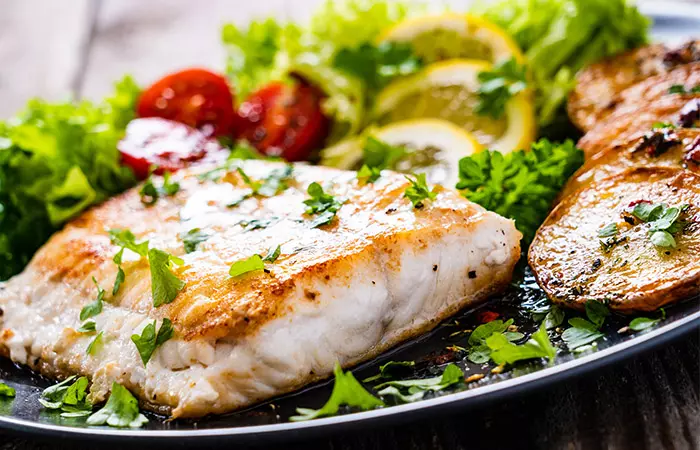
Swai fish has a mildly sweet taste and a delicate texture. It is versatile – you can grill or bake it, coat it with bread crumbs, and fry it. You can use fresh or frozen fish fillets. It can be cooked easily and goes well with any sauce. There are several simple swai fish recipes that you can try even if you are new to cooking. Try these scrumptious swai fish cuisine dishes and you’ll be hooked. Here is a popular recipe for you to get started:
Baked Swai With Lemon And Herbs
Ingredients
- 4 Swai fish fillets (approximately 4 ounces each)
- 2 tablespoons olive oil
- 1 lemon, juiced
- 1 lemon, sliced
- 2 garlic cloves, minced
- ½ teaspoon onion powder
- 1 teaspoon dried parsley
- ½ teaspoon dried oregano
- ½ teaspoon black pepper
- ½ teaspoon paprika
- 1 teaspoon salt
Instructions
- Preheat the oven to 400°F.
- Combine olive oil, lemon juice, garlic, onion powder, parsley, oregano, black pepper, paprika, and salt in a small bowl.
- Brush this herb mixture generously over each swai fillet.
- Place them in a large baking dish lined with parchment paper.
- Place lemon slices on top of the fillets.
- Bake for 10-12 minutes or until the fish appears opaque.
- Serve hot with rice, roasted vegetables, or a light salad.
A food blogger shared her personal experience with how she likes to relish swai fish in numerous recipes. She talks about one such recipe and states, “I decided this is the way to go since I use it so often. Sometimes I will just straight up bake the Swai in the oven with some oil and spices, but my absolute favorite is to cook it in a tin foil pouch! (i).”
Swai fish’s adaptability to various cooking styles makes it easy to create delicious meals with minimal effort. Scroll down to know what are those.
Best Ways To Cook Swai Fish
Swai fish is exceptionally versatile and works well with various cooking techniques due to its mild flavor. A common option is pan-frying, which keeps the inside of the fish tender while adding a crispy coating that enhances its delicate flavor. Just sprinkle the fillets with seasoned flour or breadcrumbs and cook them on each side for 3 to 4 minutes in a skillet with a little oil over medium heat.
Another simple and healthy method is to bake the fish, which allows marinades or flavors like garlic, lemon, and herbs to soak into it. Bake it for 10 to 15 minutes at 375°F (190°C), or until it flakes easily with a fork.
For a rich, smoky flavor, grilling is ideal. To avoid sticking, marinate the fish and cook it on the grill for 3–4 minutes on each side over medium heat.
In contrast, steaming is a delicate technique that preserves moisture and enhances the fish’s natural flavor.
As swai fish is inexpensive and tasty, it has become a popular substitute for more expensive seafood. Yet, its farming practices raise health concerns. Here’s why.
Possible Concerns About Swai Fish Farming
1. Low Sustainability
Swai fish producers do not practice a regular breeding program. Instead, they use the same broods and their offspring as broodstock every year. Therefore, it is not sustainable seafood. Inbreeding results in abnormal growth, reduced fertility, low disease resistance, and loss of variability (10).
2. Environmental Risks
A majority (83%) of catfish farmers use chemicals or drugs due to poor water quality. The chemical-mixed water can pollute the local water bodies, causing health issues for wild animals, livestock, and people living in the surrounding area (10).
3. Use Of Antibiotics
Catfish farmers often use chemicals and antibiotics to prevent bacterial disease outbreaks in the fish. Excessive use of antibiotics and chemicals in the seafood industry poses a great threat to the environment and human health (10).
In South Vietnam, most swai fish farmers rely on the Mekong River for their water supply. Unfortunately, some do not screen and improve the water quality before fish farming begins (11).
If the water is contaminated, the fish may also become contaminated. Thus, buying frozen swai fish fillets can be risky. The next sections explore the risk factors of consuming swai fish.
Risk Factors Of Consuming Swai Fish
1. Microbial Contamination
A study found traces of heavy metal and microbial contamination in frozen swai fish fillets exported to Poland, Ukraine, and Germany. It found Vibrio bacteria in 70-80% of the fillets. It also found Staphylococci in 30% of swai fish imported to Poland. This could pose health risks if the fish were consumed raw or undercooked (12).
Lack of hygiene in the processing and fish handling area is also a cause for concern. An evaluation of 144 samples collected from various processing steps found the presence of Escherichia coli, Staphylococcus aureus, Listeria monocytogenes, and Vibrio cholerae on the hands of the packaging area workers (13).
2. Heavy Metal Contamination
Due to poor farming practices, the risk of heavy metal contamination is high in swai fish. Studies found traces of cadmium, lead, nickel, copper, and mercury in a majority of the fish samples. These contaminants can cause serious health issues (14), (15).
3. Chemical Contamination
Swai fish degrades quickly. The oxidative degeneration of the PUFA membranes in the fish produces malondialdehyde (MDA) in the fish. This toxin may cause insulin resistance and high blood pressure in humans.
During fish processing, polyphosphate is often added to fish filets to enhance the water binding ability of the flesh. However, the swai fish samples from Vietnam contained an excess of the chemical, a toxin for humans.
Improper storage, handling, and processing of swai fish can also speed up the oxidation process and lead to ammonia contamination. Ammonia is also produced in the fish when it starts to decompose or degrade (14).
Everything boils down to improper farming, storage, and handling practices, which exposes the fish to industrial pollutants. Therefore, there is a need to revise the swai fish farming strategies. However, after considering all these factors, swai fish may still not be suitable for everyone. Read on to find out why.
Side Effects And Allergies
Why is swai fish bad for you? Swai fish could cause allergies in some people. Fish allergy is a common food allergy, and most fish-allergic people react to parvalbumin, a protein present in many fish species. However, a study reported the presence of two unique allergens – 18-kDa and 45-kDa, which caused oral allergy symptoms like lips and tongue swelling and throat itch (16).
Swai fish is, therefore, not an ideal candidate for healthy and safe fish options due to its poor nutritional profile and risk of infection. There may not always be a cause for concern with it, but one may still wonder if it is worth taking the risk. Read on to discover better alternatives to swai fish.
Swai Fish Alternatives
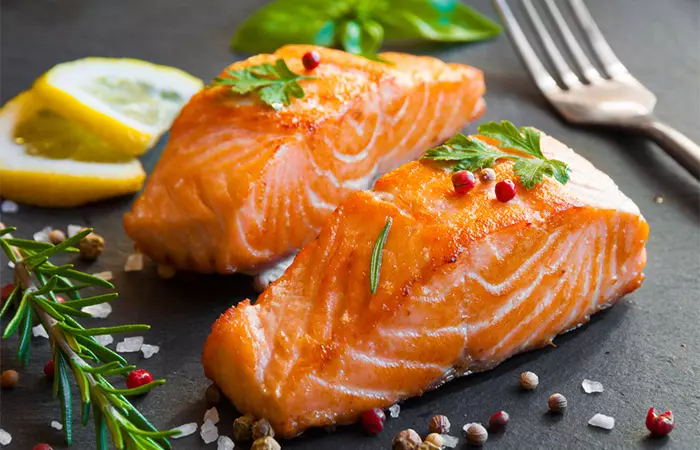
You may consume the following fish and seafood varieties (17):
- Salmon
- Anchovies
- Herring
- Sardines
- Oysters
- Trout
- Atlantic and Pacific mackerel
These fish and seafood are high in EPA, DHA, and have a lower risk of mercury poisoning. You may also consume white-fleshed fish like tilapia, cod, haddock, and halibut (18). They have low mercury levels.
Tilapia is another alternative you can opt for in place of swai. Check out the next section to understand the differences between the two fishes to help you make an informed decision.
Swai Fish Vs. Tilapia
Swai fish is lower in calories, whereas tilapia fish benefits are attributed to their high nutritional value, including their high protein and sodium content (5), (20).
If you want a fish with a tender and soft texture, opt for swai fish. On the other hand, if you prefer something with a mild taste, opt for tilapia. It is important to note that the choice of fish boils down to your dietary goals, taste preferences, and the different preparations and meals you will use them in.
Infographic: Amazing Health Benefits Of Swai Fish
Swai fish is a neutral-flavored fish with a pleasant taste. It is packed with omega-3 fats and lean protein that offers a multitude of health benefits. The intake of swai may improve your cognitive function, heart, and vision health. See the infographic below to learn more about its health benefits.
Some thing wrong with infographic shortcode. please verify shortcode syntax
Swai fish is known for its mild and sweet flavor. If included as a part of a healthy diet, this fish can promote cardiovascular health as it is rich in omega-3 fatty acids. Swai fish can also reduce the risk of heart-related disease deaths. Swai fish is rich in DHA and can also help boost brain function. In addition, it may improve vision because of the presence of EPA and DHA. However, there is a high microbial, heavy metal, and chemical contamination risk. Hence consume it in moderation and buy only good quality swai fish.
Frequently Asked Questions
Is swai fish good for weight loss?
Yes, swai fish is a good choice for weight loss. Hundred grams of swai fish have 14 grams of protein and only 90 calories, making it ideal for a weight loss diet.
Is swai fish good for keto?
Yes, swai fish is good for keto as it has zero carbohydrates and is loaded with healthy fats. However, it is always better to consume freshwater catfish than farm-raised fish.
Is swai fish clean or unclean?
Some people often refer to swai fish as unclean because they are raised in unclean water filled with bacteria.
Does swai taste like salmon?
No, swai fish does not taste like salmon. Swai has a soft, flaky texture and a gentle, sweet flavor. On the other hand, salmon has a smoky, buttery flavor and a firmer texture.
How long does swai fish typically last in the fridge or freezer?
Swai fish can be kept in the fridge for two days and in the freezer for six months.
What is the cost of swai fish, and is it affordable compared to other types of fish?
Swai fish costs between 1 to 2 dollars a pound whereas salmon costs between 5 to 6 dollars per pound, making it an affordable option for many.
Is swai fish a good source of protein for athletes or people looking to build muscle?
Swai fish can be a great alternative for people who are looking to cut back on their calories. Also, its modest protein content can aid in muscular growth in your body (20).
Can swai fish be used in sushi or sashimi dishes?
No, its soft and flaky texture does not make the right fish for sushi and sashimi, unlike salmon that has a firmer and more buttery flavor.
What are some common seasonings or marinades that pair well with swai fish?
A simple marinade of olive oil, lemon juice, garlic, butter, fresh herbs, salt, and pepper works ‘perfectly well with swai fish.
Illustration: Is Swai Fish Healthy? Benefits, Side Effects, And More
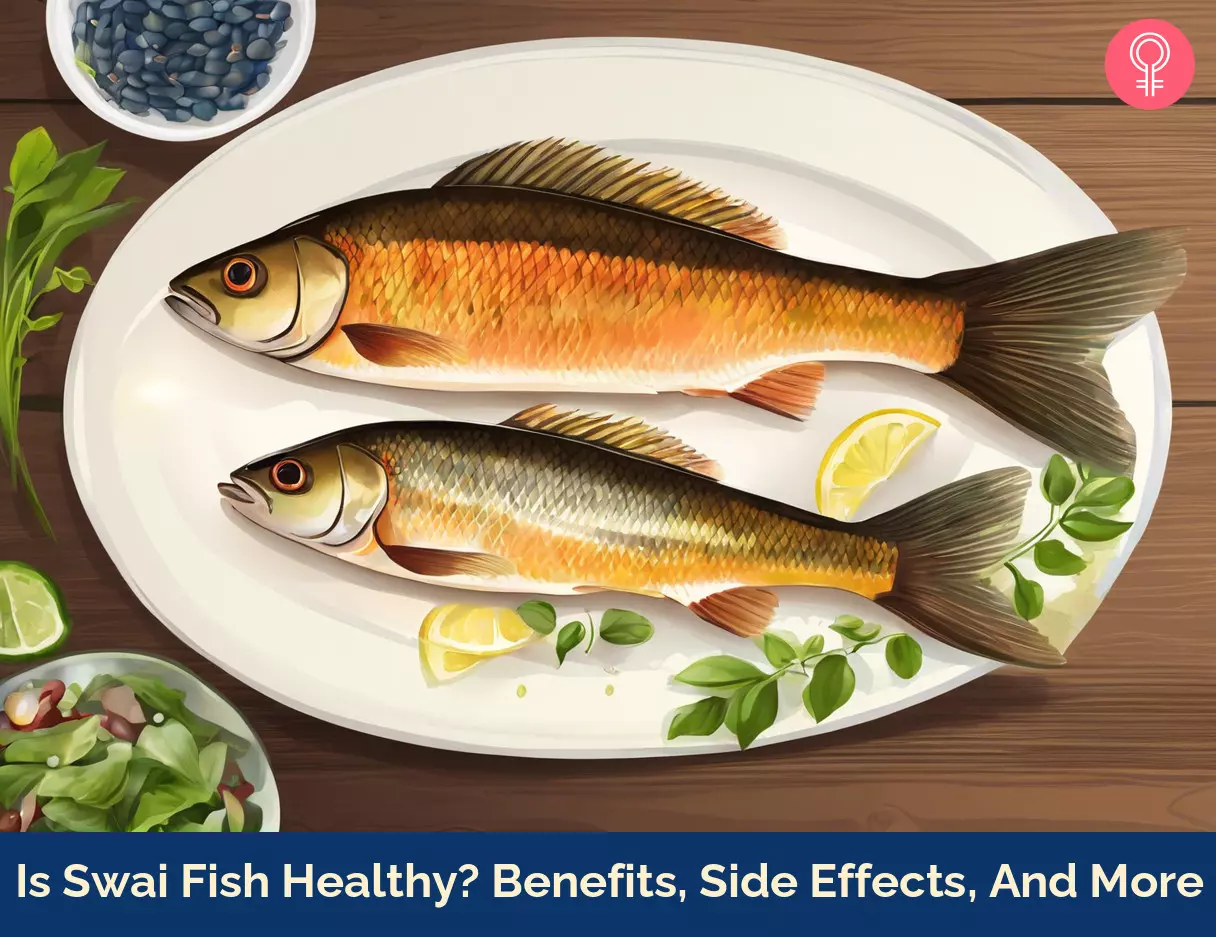
Image: Stable Diffusion/StyleCraze Design Team
Discover the truth about Swai fish and its health benefits in this insightful video. Explore its nutritional value, potential risks, and make informed choices for a well-balanced and healthy diet. Check it out!
Personal Experience: Source
StyleCraze's articles are interwoven with authentic personal narratives that provide depth and resonance to our content. Below are the sources of the personal accounts referenced in this article.
i. Baked Swai in Tin Foil Pouchhttps://ikuisine.wordpress.com/2013/02/20/baked-swai-in-tin-foil-pouch/
References
Articles on StyleCraze are backed by verified information from peer-reviewed and academic research papers, reputed organizations, research institutions, and medical associations to ensure accuracy and relevance. Read our editorial policy to learn more.
- Pangasius hypophthalmus (Sauvage 1878)
https://www.fao.org/fishery/culturedspecies/Pangasius_hypophthalmus/en - Casting a Wider Net: More Action Needed to Stop Seafood Fraud in the United States
https://usa.oceana.org/wp-content/uploads/sites/4/march_2019_oceana_seafood_fraud_report_final.pdf - Import Alert 16-04
https://www.accessdata.fda.gov/cms_ia/importalert_13.html - FoodData Central
https://fdc.nal.usda.gov/fdc-app.html#/food-details/449548/nutrients - New trends in the seafood market. Sutchi catfish (Pangasius hypophthalmus) fillets from Vietnam: Nutritional quality and safety aspects
https://pubmed.ncbi.nlm.nih.gov/26049230/ - Fatty Acid Profiles of Commercially Available Finfish Fillets in the United States
https://www.ncbi.nlm.nih.gov/pubmed/25108414 - Usefulness of Omega-3 Fatty Acids and the Prevention of Coronary Heart Disease
https://www.sciencedirect.com/science/article/abs/pii/S0002914905014542 - Docosahexaenoic Acid and Cognition throughout the Lifespan
https://www.ncbi.nlm.nih.gov/pmc/articles/PMC4772061/ - The Role of Fish Oil in Inflammatory Eye Diseases
https://www.ncbi.nlm.nih.gov/pmc/articles/PMC6945974/ - Culture of Pangasianodon hypophthalmus into India: impacts and present scenario
https://upsbdb.org/pdf/2013/reserch_publications/3-2.pdf - Current status of farming practices of striped catfish Pangasianodon hypophthalmus in the Mekong Delta Vietnam
https://www.sciencedirect.com/science/article/abs/pii/S0044848609007066 - Microbiological and chemical safety concerns regarding frozen fillets obtained from Pangasius sutchi and Nile tilapia exported to European Countries
https://pubmed.ncbi.nlm.nih.gov/25907121/ - Evaluation of the microbiological safety and quality of Vietnamese Pangasius hypophthalmus during processing by a microbial assessment scheme in combination with a self-assessment questionnaire
https://link.springer.com/article/10.1007/s12562-014-0786-y - The chemical quality of frozen Vietnamese Pangasius hypophthalmus fillets
https://www.academia.edu/27019775/The_chemical_quality_of_frozen_Vietnamese_Pangasius_hypophthalmus_fillets - Assessment of Human Health Risks Associated with Heavy Metals Accumulation in the Freshwater Fish Pangasianodon hypophthalmus in Bangladesh
https://www.researchgate.net/publication/349635372_Assessment_of_human_health_risks_associated_with_heavy_metals_accumulation_in_the_freshwater_fish_Pangasianodon_hypophthalmus_in_Bangladesh - Monosensitivity to Pangasius and Tilapia Caused by Allergens Other Than Parvalbumin
https://www.jiaci.org/issues/vol20issue1/13.pdf - Dietary Guidelines for Americans
https://odphp.health.gov/sites/default/files/2025-01/DietaryGuidelines2010.pdf - Mercury Levels in Commercial Fish and Shellfish (1990-2012)
https://www.fda.gov/food/metals-and-your-food/mercury-levels-commercial-fish-and-shellfish-1990-2012 - Fish, tilapia, raw
https://fdc.nal.usda.gov/fdc-app.html#/food-details/175176/nutrients - Association Between Fish Consumption and Muscle Mass and Function in Middle-Age and Older Adults https://www.ncbi.nlm.nih.gov/pmc/articles/PMC8710756/
Read full bio of Rowinda Dimech
Read full bio of Payal Karnik
Read full bio of Ravi Teja Tadimalla
Read full bio of Himanshi Mahajan








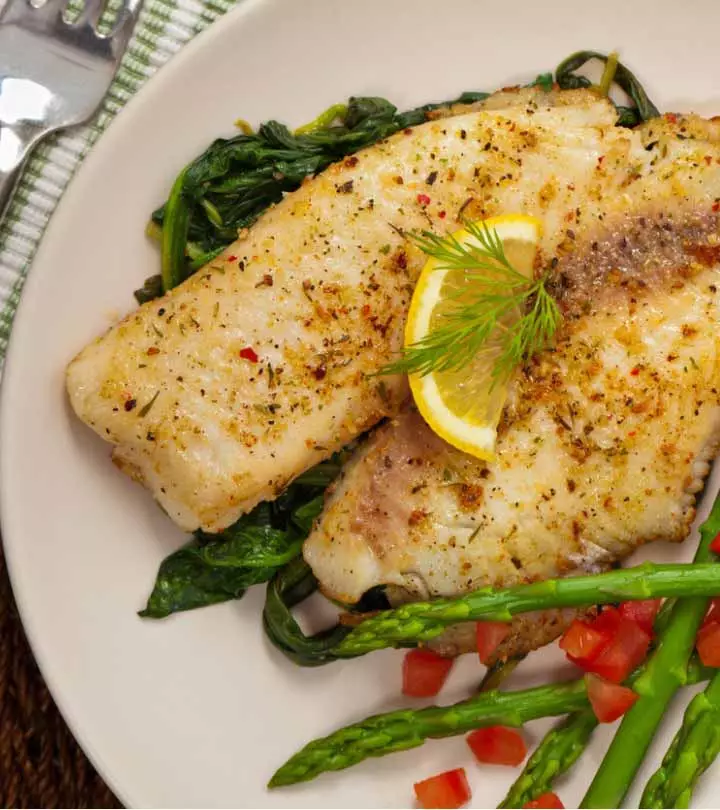








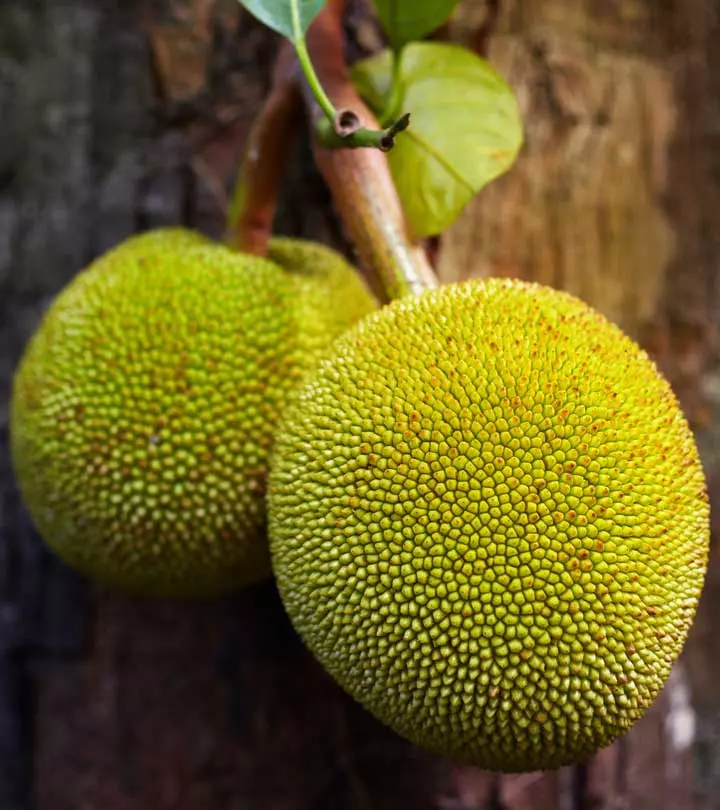

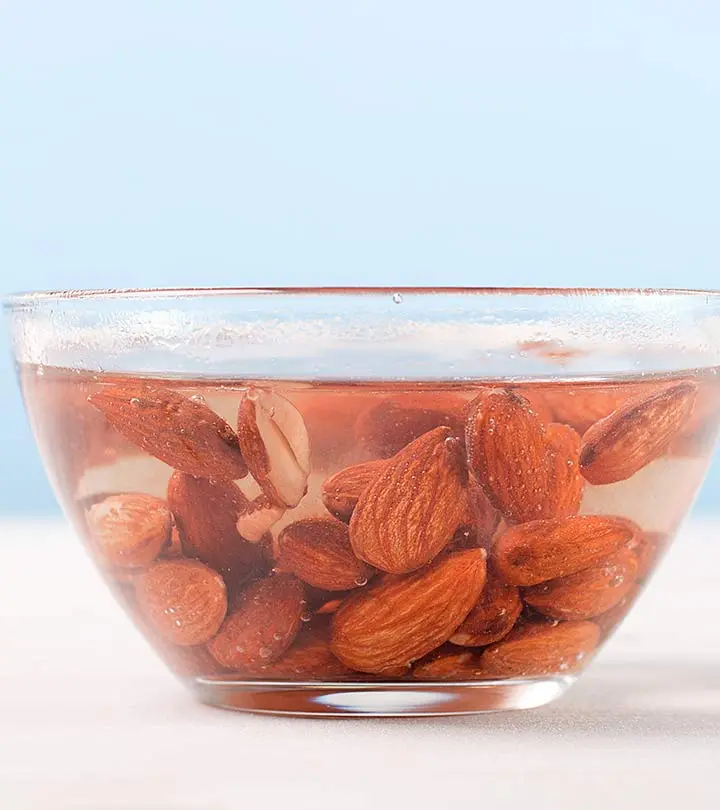


Community Experiences
Join the conversation and become a part of our empowering community! Share your stories, experiences, and insights to connect with other beauty, lifestyle, and health enthusiasts.